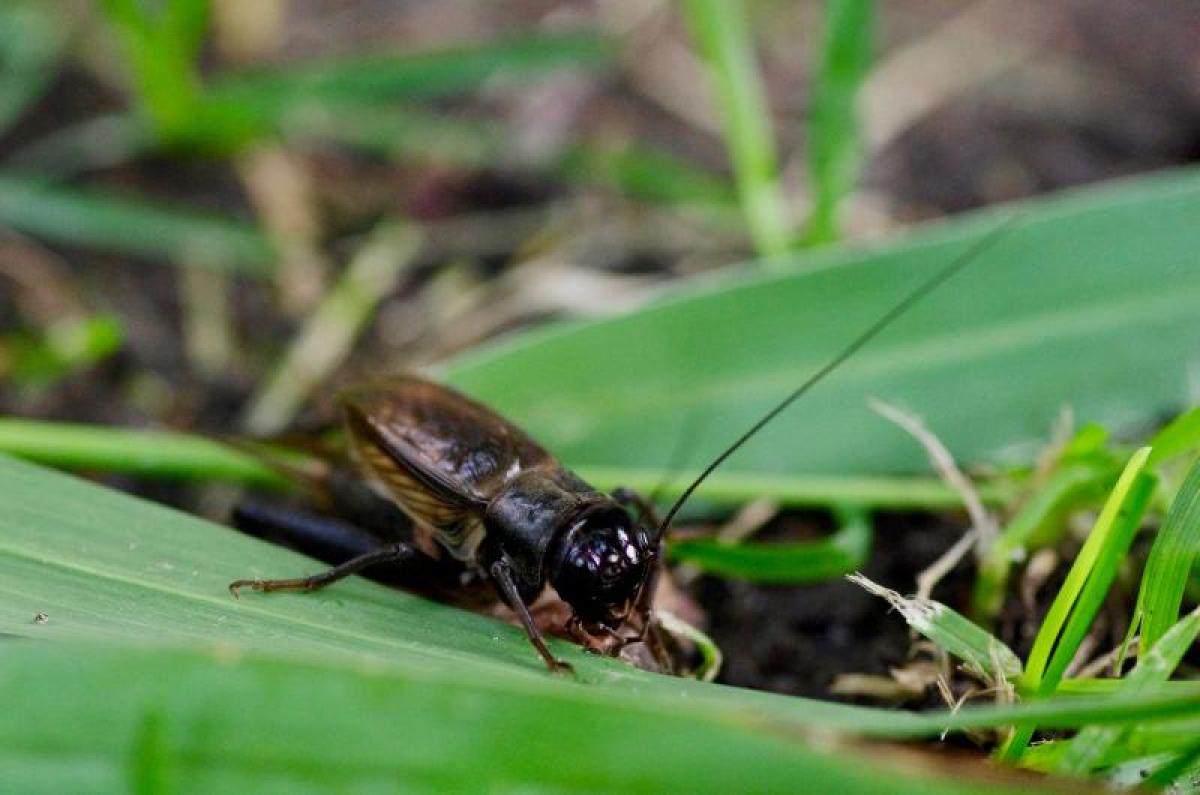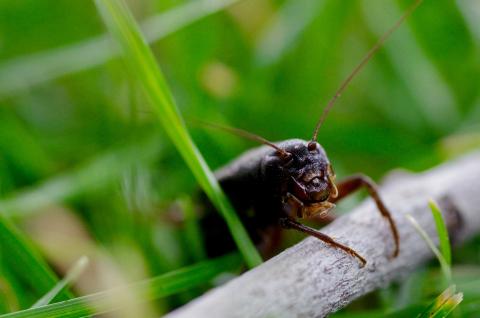Crick-cats: DU Professor Dives Into Evolution With Discovery of Purring Crickets

“Where’s the cat?”
That’s what DU assistant biology professor Robin Tinghitella found herself wondering as she sat in her room at Molokai’s Kalaupapa National Historic Site, attempting to identify the source of a faint purring noise.
She had come to Kalaupapa for its silence, which made the purring all the more jarring. One of her graduate students had been studying the effects of traffic noise on cricket communication, and Kalaupapa, a former leper colony that still houses several patients, presented the perfect place to collect a control group of crickets. The site, on Hawaii’s fifth largest island, remains isolated and generally free from anthropogenic noise; it’s accessible only by a ride on a tiny plane, or by hiking hours down the switchbacks of a massive cliff face.
Tinghitella had not felt great about the odds of finding any crickets. So low were her expectations that she had brought only a single Tupperware container for specimen collection during her one night on the island. Tinghitella’s trip was deemed successful when she located a group of crickets nestled in the grasses of a small lawn. She rounded up about 45 of them, in hopes that overnight they might lay eggs she could use to create a colony back at DU, and headed in.
As she sat in her room, alone with her box of crickets, the purring persisted.
Though she had come to Kalaupapa unsure she’d find any crickets at all, Tinghitella had, in fact, made a remarkable discovery. These crickets were not belting out their familiar singsong chirp, and no cat was responsible for the incessant hum in the room. It was the crickets that were purring.
“This is like if lions never had manes and they all suddenly got manes. Or if peacocks never had tails with bright, colored plumes all over them and then suddenly had giant tails,” Tinghitella says.
For Tinghitella and her team, this represented an unprecedented opportunity: the chance to observe the evolution of a new animal communication signal. “There’s a lot of variation between purring males, and that’s kind of reflective of it being a new evolutionary change. This thing just happened, so there’s a lot of variation in what they sound like, and evolution hasn’t really honed what this type is going to [sound] like in the future yet,” she says, noting that the sound can resemble everything from the tonal fluttering of a cat to a typewriter.
Since the May 2017 discovery of the new cricket sounds, Tinghitella and her team have spent more than a year documenting the evolution of male purring crickets and the reaction of their female counterparts. In addition to Molokai’s purring crickets, they have observed purring populations on Oahu and Kauai. Their work is documented in a recently released article, “Purring Crickets: The Evolution of a Novel Sexual Signal,” co-authored by former DU postdoctoral fellow Dale Broder and three DU graduate students, Gabrielle Gurule-Small, Claudia Hallagan and Jacob Wilson.
Tinghitella is no stranger to major scientific breakthroughs. During her graduate studies, she was part of a team who discovered silent crickets on other Hawaiian Islands. Her research found that this evolutionary change had occurred to protect crickets from a parasitoid fly that uses the male song to locate calling male crickets and spray larvae on them. The larvae burrow into the cricket’s body cavity, essentially eating them from the inside out.
That discovery came years ago, but it remains relevant to many of the questions Tinghitella hopes to answer about her purring crickets — namely, what their ancestor was. Tinghitella and her team hypothesize that the purring crickets evolved from silent crickets because the mutation betters their chances of attracting female mates, while still remaining hidden from the predatory flies. “We really want to know if the fly can hear this new purring sound,” Tinghitella says. “If it can’t, that’s a really cool and incredible kind of new discovery, where it might be a private mode of communication, and evolution has changed their signal enough that females can still hear it and use it, but that this parasitoid might not be able to.”
Tinghitella’s team is collaborating with colleagues who do genomics work to determine the purring crickets’ ancestor. In the meantime, the team is studying other aspects of this mutation, including the relationship between the structure of a cricket’s wing and its ability to sing. According to Tinghitella, the purring crickets have a wing shape somewhere between that of a typical cricket and that of a silent cricket. “We are doing something called morphometrics, where you put a bunch of little landmarks on different key parts of the wing … and doing a bunch of statistical comparisons between typical and purring and silent wings,” she explains.
The most significant aspect of her discovery, Tinghitella says, is that in many ways it disproves conventional wisdom in the scientific community that dates back to Darwin. “If you think back on the last 150 years of research on evolutionary change, Darwin thought this was something that happened really slowly. He thought you could only look back and make inferences about what happened in the past,” she says. “Studies like this show that that’s just totally not the case. Darwin got a lot right, but that was one thing he didn’t get right.”
Beyond that, the evolution of crickets on Hawaii may be an indication of what’s to come. “It does tell us something about the types of changes in animal communication that we might expect to have happen with something like climate change that’s bringing different species into contact with each other that might not have contacted each other previously, or urbanization for that matter,” she says. “Often we think of animals as not being able to keep up with the pace of environmental change, but in some cases they really can.”
Tinghitella’s research takes her to Hawaii about every six months. These periodic trips allow her to track the changes in developing generations of crickets.
“The evolution of a new animal communication signal has only ever been observed once before, so this is a crazy opportunity to watch this in real time,” she says. “People don’t get to do that.”









